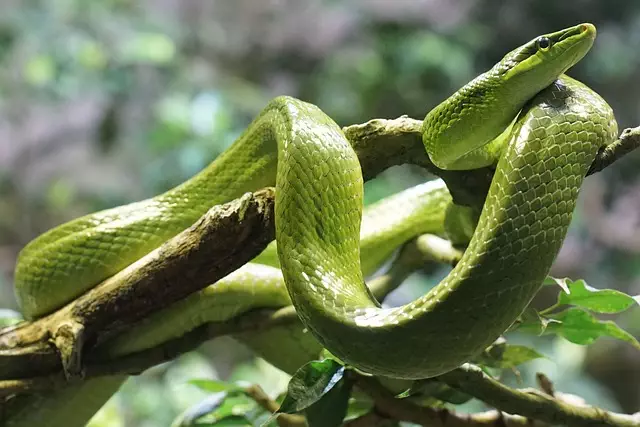Tree roots can severely damage sewer lines, especially in older homes with clay or plastic pipes. Homeowners in Toledo, Ohio, with tree-lined areas should watch for slow drains and recurring clogs as early indicators of root infiltration. Prompt action is key to preventing sewage backup, structural damage, and health hazards. Full replacement of damaged pipes using durable HDPE materials is often necessary, costing between $X and $Y depending on pipe length, accessibility, and the type of replacement material. Choosing a licensed, experienced contractor with specialized equipment can ensure efficient, effective repairs while adhering to local regulations. Regular inspections, selective pruning, and proper planting techniques also help prevent future root damage.
Tree roots seeking moisture and nutrients can wreak havoc on sewer lines, causing costly damage. If you’re in Toledo, understanding the common signs of root-induced sewer line damage and knowing your options for replacement is crucial. This guide delves into the process of sewer line replacement in Toledo, covering everything from identifying problems to choosing the right contractor. We also explore factors influencing costs and preventive measures to safeguard against future root intrusion, emphasizing the importance of proactive maintenance for a seamless sewer line experience.
- Understanding Sewer Line Damage Caused by Tree Roots
- The Process of Sewer Line Replacement in Toledo
- Common Signs Indicating the Need for a Sewer Line Replacement
- Factors Affecting Sewer Line Replacement Costs
- Choosing the Right Contractor for Your Sewer Line Replacement Project
- Preventive Measures to Avoid Future Tree Root Damage to Sewer Lines
Understanding Sewer Line Damage Caused by Tree Roots
Tree roots are a common and often unexpected cause of sewer line damage. In the quest for nutrients and water, tree roots can intrude into pipes, causing cracks, breaks, or complete blockages over time. This is particularly prevalent in older homes where sewers are made of materials that attract root growth, like clay or plastic with small seams. As roots expand, they can exert significant pressure on the pipe walls, leading to structural damage and potential leaks.
Identifying sewer line damage caused by tree roots is crucial for homeowners living in areas with substantial tree coverage. Ignoring the issue can result in costly repairs, sewage backup, and even health hazards. Recognizing the signs of root intrusion, such as slow-flowing drains or recurring clogs, is essential. When these problems arise, consulting a professional about sewer line replacement in Toledo is recommended to prevent further damage and ensure the longevity of your plumbing system. Understanding the extent of the damage and choosing the right material for replacement, like high-density polyethylen (HDPE), can help avoid future root infiltration.
The Process of Sewer Line Replacement in Toledo
When a sewer line in Toledo becomes damaged due to tree roots, it’s often necessary to replace the entire line rather than just repairing the affected section. The process starts with a thorough inspection to identify the extent of the damage and plan the most effective replacement route. This is crucial as navigating the complex underground landscape can be challenging, especially in older parts of town where infrastructure may be labyrinthine.
Once the plan is finalized, excavation begins to access the damaged line. Specialized equipment is used to remove the old sewer pipe while minimizing disruption to surrounding properties and landscapes. After the old pipe is removed, new pipes are installed, typically made from durable materials like high-density polyethylene (HDPE) or concrete. These modern pipes are less susceptible to tree root intrusion due to their smooth interior surfaces and robust construction. Finally, the area is backfilled and compacted, ensuring a stable foundation for the newly installed sewer line. The entire process aims to restore the functionality of the sewer system while addressing the underlying cause of damage—tree roots—to prevent future issues and keep sewer line replacement costs manageable in the long term.
Common Signs Indicating the Need for a Sewer Line Replacement
Many homeowners in Toledo often ignore potential issues with their sewer lines until they’re faced with a costly emergency. However, recognizing the common signs of root damage can help prevent severe and expensive sewer line replacements. One of the first indicators is a noticeable decrease in water pressure, which may be accompanied by inconsistent water flow or even low-pressure spills from fixtures. This could suggest a partial blockage caused by tree roots infiltrating the pipes.
Another telltale sign is an unusual increase in plumbing noises, such as banging or clanking sounds coming from the walls or floors. These noises often indicate structural damage due to root intrusion, which can weaken the sewer lines over time. If you start noticing persistent clogs that don’t go away with regular cleaning or if your toilet flushing becomes inefficient, it’s a red flag that roots have taken hold in the pipes. Additionally, overflowing sinks or toilets after flushing could point to a severe blockage and potential root damage. Promptly addressing these issues through professional sewer line replacement services can save you from costly repairs and health hazards associated with raw sewage leaks.
Factors Affecting Sewer Line Replacement Costs
Several factors influence the cost of sewer line replacement due to tree root damage in Toledo and beyond. One of the primary determiners is the length of the affected pipe. The more extensive the damage, the longer the replaced pipeline needs to be, directly impacting overall expenses. Another significant factor is access to the sewer lines. If the damaged section is easily accessible, the replacement process becomes less labor-intensive and costly. However, if it requires complex excavation or involves tight spaces, such as in residential areas with limited access, the project price tag will increase.
The type of pipe used for replacement also plays a role in cost calculation. Different materials have varying levels of durability, life expectancy, and installation complexity. Higher-quality pipes might be more expensive upfront but could offer longer-term savings by reducing future repair needs. Additionally, labor costs vary based on local rates, project complexity, and the need for specialized techniques or equipment to address specific challenges like root intrusions.
Choosing the Right Contractor for Your Sewer Line Replacement Project
When considering a sewer line replacement due to tree root damage in Toledo, choosing the right contractor is paramount. Look for licensed and insured professionals with extensive experience in sewer line replacements. A well-reputed company will employ specialized equipment and methods to ensure your project’s efficiency and effectiveness. They should be adept at assessing the extent of damage, providing transparent estimates, and adhering to local regulations.
Reputation matters when it comes to handling such critical infrastructure repairs. Check online reviews, ask for references, and compare costs from multiple contractors. The right fit will balance expertise, affordability (keeping in mind that sewer line replacements have varying costs based on scope), and a commitment to quality work, ensuring your sewer line is restored to optimal condition.
Preventive Measures to Avoid Future Tree Root Damage to Sewer Lines
Preventive measures are essential to avoid future tree root damage to sewer lines, especially for homeowners in areas with mature trees. Regular inspection and maintenance can significantly reduce the risk. One effective strategy is to periodically inspect your sewer line for any signs of damage or intrusion by tree roots. This proactive approach allows for timely intervention before a minor issue becomes a costly sewer line replacement in Toledo.
Additionally, keeping trees properly trimmed around your property’s infrastructure is crucial. While it may seem counterintuitive, selective pruning can help deter tree roots from targeting sewer lines. Proper planting techniques, such as maintaining a safe distance between trees and pipes, further mitigate the risk. Considering the potential impact on sewer line replacement costs, these preventive measures offer long-term savings for homeowners.


